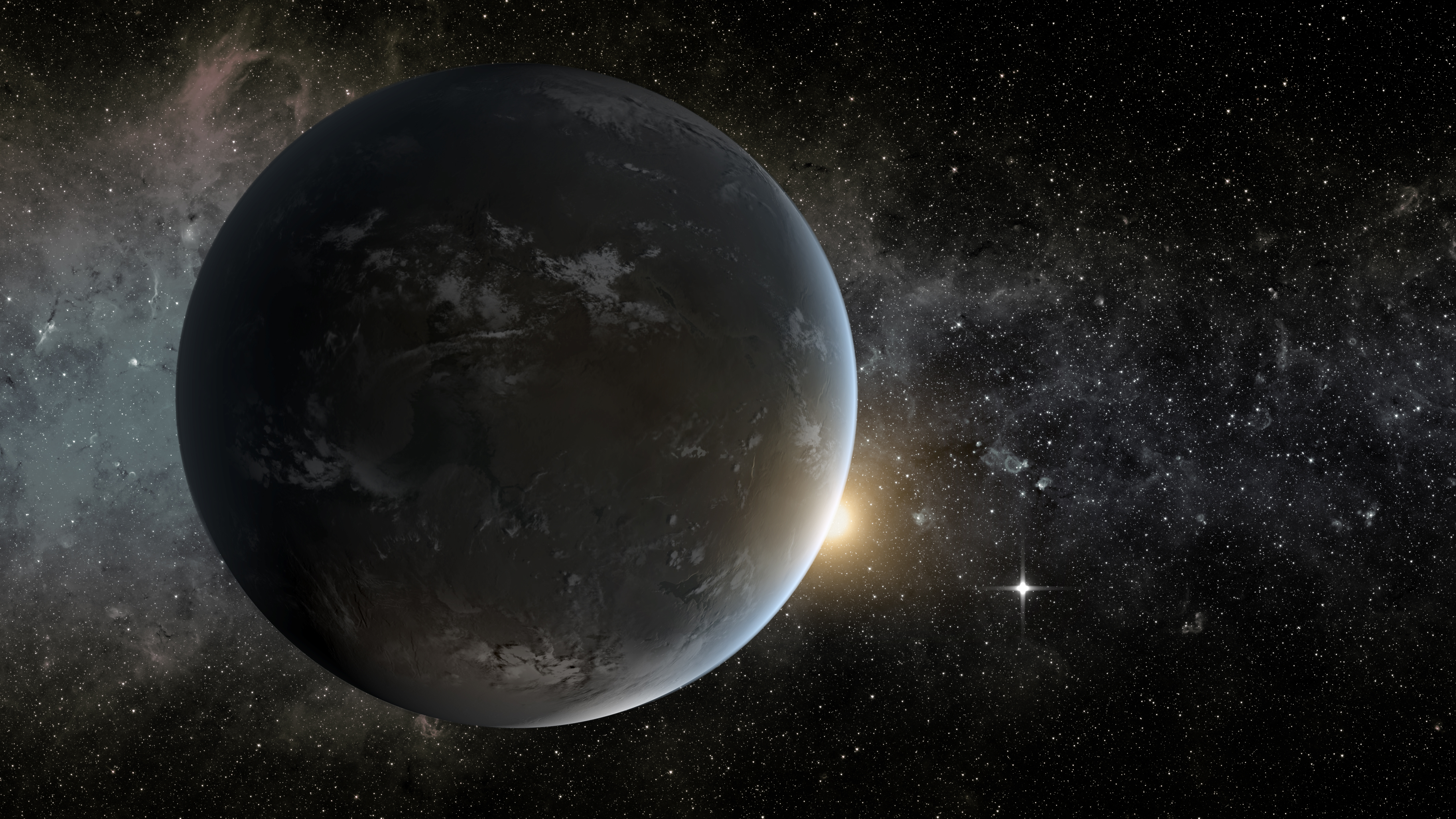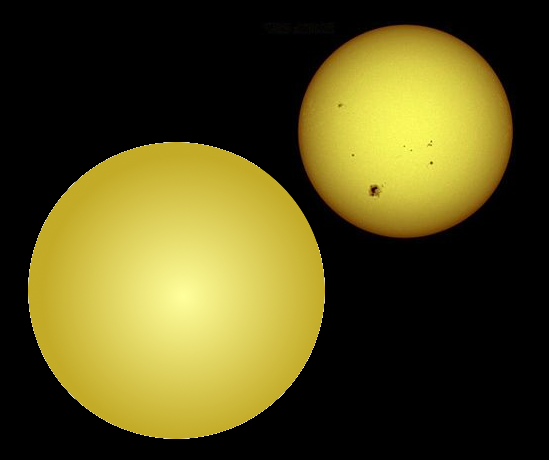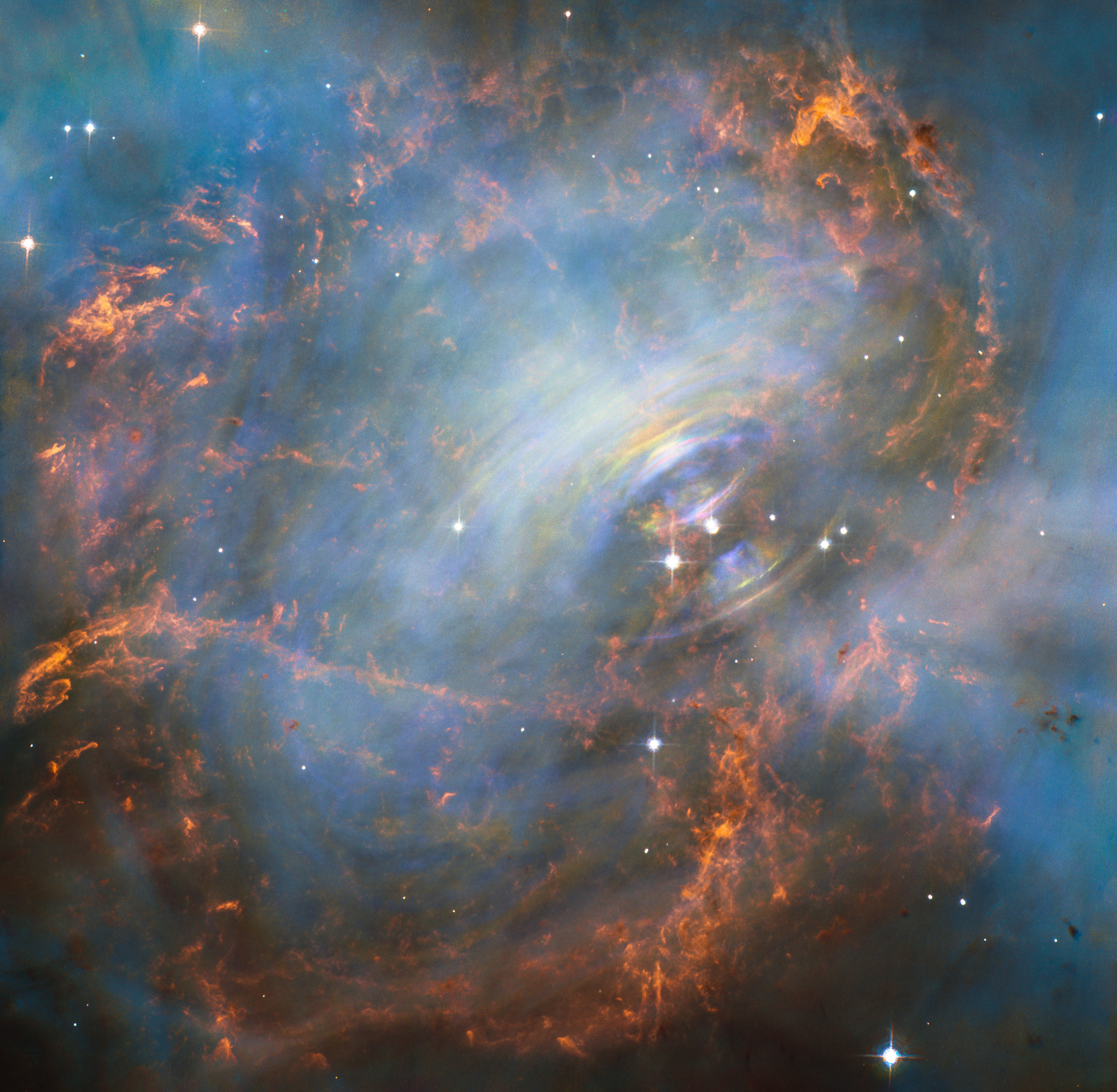|
List Of Planets Discovered By The Kepler Spacecraft
The list of exoplanets detected by the Kepler space telescope contains bodies with a wide variety of properties, with significant ranges in orbital distances, masses, radii, composition, habitability, and host star type. As of June 16 2023, the Kepler space telescope and its follow-up observations have detected 2,778 planets, including hot Jupiters, super-Earths, circumbinary planets, and planets located in the circumstellar habitable zones of their host stars. Kepler has detected over 3,601 unconfirmed planet candidates and 2,165 eclipsing binary stars. In addition to detecting planets itself, Kepler has also uncovered the properties of three previously known extrasolar planets. Public Kepler data has also been used by groups independent of NASA, such as the Planet Hunters citizen-science project, to detect several planets orbiting stars collectively known as Kepler Objects of Interest. Kepler, launched on March 7, 2009, was designed to observe a fixed portion of the sky in ... [...More Info...] [...Related Items...] OR: [Wikipedia] [Google] [Baidu] |
Kepler-62f With 62e As Morning Star
Kepler-6 is a G-type star situated in the constellation Cygnus (constellation), Cygnus. The star lies within the field of view of the Kepler Mission, which discovered it as part of a NASA-led mission to discover terrestrial planet, Earth-like planets. The star, which is slightly larger, more metal-rich, slightly cooler, and more massive than the Sun, is orbited by at least one extrasolar planet, a Jupiter-sized planet named Kepler-6b that orbits closely to its star. Nomenclature and history Kepler-6 was named for the Kepler Mission, a NASA project launched in 2009 that aims to discover terrestrial planet, Earth-like planets that transit method, transit, or cross in front of, their home stars with respect to Earth. Unlike stars like the Sun or Sirius, Kepler-6 does not have a common and colloquial name. The discovery of Kepler-6b was announced by the Kepler team on January 4, 2010 at the American Astronomical Society 215th meeting, 215th meeting of the American Astronomic ... [...More Info...] [...Related Items...] OR: [Wikipedia] [Google] [Baidu] |
Transit Method
Methods of detecting exoplanets usually rely on indirect strategies – that is, they do not directly image the planet but deduce its existence from another signal. Any planet is an extremely faint light source compared to its parent star. For example, a star like the Sun is about a billion times as bright as the reflected light from any of the planets orbiting it. In addition to the intrinsic difficulty of detecting such a faint light source, the glare from the parent star washes it out. For those reasons, very few of the exoplanets reported have been detected directly, with even fewer being resolved from their host star. Established detection methods The following methods have proven successful at least once for discovering a new planet or detecting an already discovered planet: Radial velocity A star with a planet will move in its own small orbit in response to the planet's gravity. This leads to variations in the speed with which the star moves toward or away from E ... [...More Info...] [...Related Items...] OR: [Wikipedia] [Google] [Baidu] |
Earth
Earth is the third planet from the Sun and the only astronomical object known to Planetary habitability, harbor life. This is enabled by Earth being an ocean world, the only one in the Solar System sustaining liquid surface water. Almost all of Earth's water is contained in its global ocean, covering Water distribution on Earth, 70.8% of Earth's crust. The remaining 29.2% of Earth's crust is land, most of which is located in the form of continental landmasses within Earth's land hemisphere. Most of Earth's land is at least somewhat humid and covered by vegetation, while large Ice sheet, sheets of ice at Polar regions of Earth, Earth's polar polar desert, deserts retain more water than Earth's groundwater, lakes, rivers, and Water vapor#In Earth's atmosphere, atmospheric water combined. Earth's crust consists of slowly moving tectonic plates, which interact to produce mountain ranges, volcanoes, and earthquakes. Earth's outer core, Earth has a liquid outer core that generates a ... [...More Info...] [...Related Items...] OR: [Wikipedia] [Google] [Baidu] |
Neptune
Neptune is the eighth and farthest known planet from the Sun. It is the List of Solar System objects by size, fourth-largest planet in the Solar System by diameter, the third-most-massive planet, and the densest giant planet. It is 17 times the mass of Earth. Compared to Uranus, its neighbouring ice giant, Neptune is slightly smaller, but more massive and denser. Being composed primarily of gases and liquids, it has no well-defined solid surface. Neptune orbits the Sun once every 164.8 julian year (astronomy), years at an orbital distance of . It is named after Neptune (mythology), the Roman god of the sea and has the astronomical symbol representing Trident of Poseidon, Neptune's trident. Neptune is not visible to the unaided eye and is the only planet in the Solar System that was not initially observed by direct empirical observation. Rather, unexpected changes in the orbit of Uranus led Alexis Bouvard to hypothesise that its orbit was subject to gravitational Pe ... [...More Info...] [...Related Items...] OR: [Wikipedia] [Google] [Baidu] |
Verification By Multiplicity
Verification or verify may refer to: General * Verification and validation, in engineering or quality management systems, is the act of reviewing, inspecting or testing, in order to establish and document that a product, service or system meets regulatory or technical standards ** Verification (spaceflight), in the space systems engineering area, covers the processes of qualification and acceptance * Verification theory, philosophical theory relating the meaning of a statement to how it is verified * Third-party verification, use of an independent organization to verify the identity of a customer * Authentication, confirming the truth of an attribute claimed by an entity, such as an identity * Forecast verification, verifying prognostic output from a numerical model * Verifiability (science), a scientific principle * Verification (audit), an auditing process Computing * Punched card verification, a data entry step performed after keypunching on a separate, keyboard-equipped mach ... [...More Info...] [...Related Items...] OR: [Wikipedia] [Google] [Baidu] |
Kepler (spacecraft)
The Kepler space telescope is a defunct space telescope launched by NASA in 2009 to discover Earth-sized Exoplanet, planets orbiting other stars. Named after astronomer Johannes Kepler, the spacecraft was launched into an Earth-trailing heliocentric orbit. The principal investigator was William J. Borucki. After nine and a half years of operation, the telescope's reaction control system fuel was depleted, and NASA announced its retirement on October 30, 2018. Designed to survey a portion of Earth's region of the Milky Way to discover Terrestrial planet, Earth-size exoplanets in or near habitable zones and to estimate how many of the billions of stars in the Milky Way have such planets, Kepler's sole scientific instrument is a photometer that continually monitored the brightness of approximately 150,000 main sequence stars in a fixed field of view. These data were transmitted to Earth, then transit method, analyzed to detect periodic dimming caused by exoplanets that Astronomica ... [...More Info...] [...Related Items...] OR: [Wikipedia] [Google] [Baidu] |
Stars
A star is a luminous spheroid of plasma held together by self-gravity. The nearest star to Earth is the Sun. Many other stars are visible to the naked eye at night; their immense distances from Earth make them appear as fixed points of light. The most prominent stars have been categorised into constellations and asterisms, and many of the brightest stars have proper names. Astronomers have assembled star catalogues that identify the known stars and provide standardized stellar designations. The observable universe contains an estimated to stars. Only about 4,000 of these stars are visible to the naked eye—all within the Milky Way galaxy. A star's life begins with the gravitational collapse of a gaseous nebula of material largely comprising hydrogen, helium, and traces of heavier elements. Its stellar mass, total mass mainly determines its stellar evolution, evolution and eventual fate. A star shines for main sequence, most of its active life due to the thermonu ... [...More Info...] [...Related Items...] OR: [Wikipedia] [Google] [Baidu] |
Exoplanets
An exoplanet or extrasolar planet is a planet outside the Solar System. The first confirmed detection of an exoplanet was in 1992 around a pulsar, and the first detection around a main-sequence star was in 1995. A different planet, first detected in 1988, was confirmed in 2003. In 2016, it was recognized that the first possible evidence of an exoplanet had been noted in 1917. In collaboration with ground-based and other space-based observatories the James Webb Space Telescope (JWST) is expected to give more insight into exoplanet traits, such as their composition, environmental conditions, and potential for life. There are many methods of detecting exoplanets. Transit photometry and Doppler spectroscopy have found the most, but these methods suffer from a clear observational bias favoring the detection of planets near the star; thus, 85% of the exoplanets detected are inside the tidal locking zone. In several cases, multiple planets have been observed around a star. A ... [...More Info...] [...Related Items...] OR: [Wikipedia] [Google] [Baidu] |
Black Hole
A black hole is a massive, compact astronomical object so dense that its gravity prevents anything from escaping, even light. Albert Einstein's theory of general relativity predicts that a sufficiently compact mass will form a black hole. The boundary (topology), boundary of no escape is called the event horizon. A black hole has a great effect on the fate and circumstances of an object crossing it, but has no locally detectable features according to general relativity. In many ways, a black hole acts like an ideal black body, as it reflects no light. Quantum field theory in curved spacetime predicts that event horizons emit Hawking radiation, with thermal radiation, the same spectrum as a black body of a temperature inversely proportional to its mass. This temperature is of the Orders of magnitude (temperature), order of billionths of a kelvin for stellar black holes, making it essentially impossible to observe directly. Objects whose gravitational fields are too strong for ... [...More Info...] [...Related Items...] OR: [Wikipedia] [Google] [Baidu] |
Neutron Star
A neutron star is the gravitationally collapsed Stellar core, core of a massive supergiant star. It results from the supernova explosion of a stellar evolution#Massive star, massive star—combined with gravitational collapse—that compresses the core past white dwarf star density to that of Atomic nucleus, atomic nuclei. Surpassed only by black holes, neutron stars are the second smallest and densest known class of stellar objects. Neutron stars have a radius on the order of and a mass of about . Stars that collapse into neutron stars have a total mass of between 10 and 25 solar masses (), or possibly more for those that are especially rich in Metallicity, elements heavier than hydrogen and helium. Once formed, neutron stars no longer actively generate heat and cool over time, but they may still evolve further through Stellar collision, collisions or Accretion (astrophysics), accretion. Most of the basic models for these objects imply that they are composed almost entirely o ... [...More Info...] [...Related Items...] OR: [Wikipedia] [Google] [Baidu] |
White Dwarf
A white dwarf is a Compact star, stellar core remnant composed mostly of electron-degenerate matter. A white dwarf is very density, dense: in an Earth sized volume, it packs a mass that is comparable to the Sun. No nuclear fusion takes place in a white dwarf; what light it radiates is from its residual heat. The nearest known white dwarf is Sirius B, at 8.6 light years, the smaller component of the Sirius binary star. There are currently thought to be eight white dwarfs among the hundred star systems nearest the Sun. The unusual faintness of white dwarfs was first recognized in 1910. The name ''white dwarf'' was coined by Willem Jacob Luyten in 1922. White dwarfs are thought to be the final stellar evolution, evolutionary state of stars whose mass is not high enough to become a neutron star or black hole. This includes over 97% of the stars in the Milky Way. After the hydrogen-stellar nucleosynthesis, fusing period of a main sequence, main-sequence star of Stellar mass, lo ... [...More Info...] [...Related Items...] OR: [Wikipedia] [Google] [Baidu] |
Gravitational Microlensing
Gravitational microlensing is an astronomical phenomenon caused by the gravitational lens effect. It can be used to detect objects that range from the mass of a planet to the mass of a star, regardless of the light they emit. Typically, astronomers can only detect bright objects that emit much light (stars) or large objects that block background light (clouds of gas and dust). These objects make up only a minor portion of the mass of a galaxy. Microlensing allows the study of objects that emit little or no light. When a distant star or quasar gets sufficiently aligned with a massive compact foreground object, the bending of light due to its gravitational field, as discussed by Albert Einstein in 1915, leads to two distorted images (generally unresolved), resulting in an observable magnification. The time-scale of the transient brightening depends on the mass of the foreground object as well as on the relative proper motion between the background 'source' and the foreground 'l ... [...More Info...] [...Related Items...] OR: [Wikipedia] [Google] [Baidu] |







